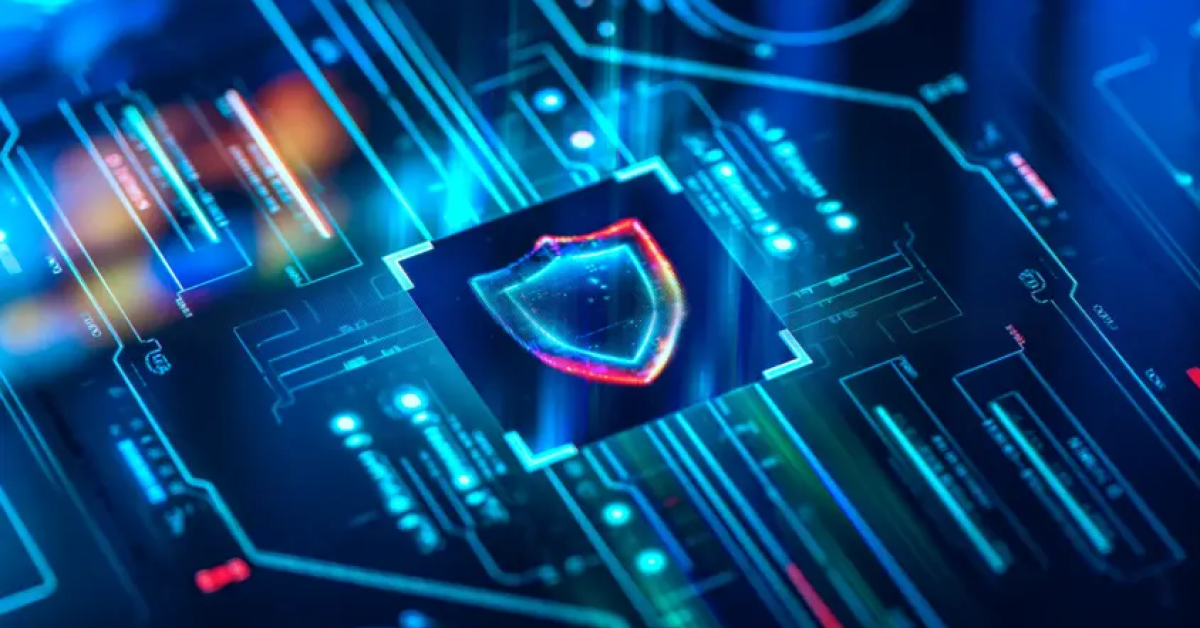Cybercriminals are getting faster at exploiting security gaps. The median dwell time observed by Sophos in the past year was a short two days.
Keeping pace with these agile threat actors leaves little room for forward thinking, but decisions made today will shape your organization’s ability to respond to tomorrow’s threats. The strategies below will help your organization build the right foundations for a cybersecurity program that stands the test of time.
1. Understand the threat landscape
From organized crime to hacktivists and state-sponsored actors, today’s threat landscape is complex and fast-moving. The starting point of a successful cybersecurity strategy is a deep understanding of this shifting threat landscape.
It’s only from here that you can appreciate your organization’s unique security gaps and take the right actions to bolster your defenses. But how do you stay up to date with an ever-changing threat landscape?
Ongoing vigilance
Understanding the threat landscape is a 24/7 endeavor, involving continuous monitoring and analysis of threat actor activity. Thankfully, organizations don’t have to go it alone. A trusted security partner can provide the expertise, processes, and technology to help organizations gain a better understanding of common attack vectors, techniques, and tactics, and how these are evolving in relation to your business.
Comprehensive visibility
To understand your risks in context and address them as they evolve, you need broad visibility across the attack surface. An open extended detection and response (XDR) platform will help you gain a holistic view of your systems, data, and processes and minimize the risk of threats slipping through the cracks.
Threat intelligence
Comprehensive intelligence is critical to a dynamic and resilient security posture, helping organizations anticipate and mitigate emerging threats. Effective threat intelligence systems leverage human expertise, AI, and analytics to analyze attack patterns and refine strategies continuously. Armed with actionable insights, forecasts, and recommendations, organizations can prepare for the worst — in the best way possible.
Sophos’ Active Adversary report shows the kind of intelligence that empowers our customers to continuously outpace and outmaneuver adversaries.
2. Look at threats in context
Context is key to understanding and applying what you learn from threat intelligence. Insights from intelligence, combined with relevant business information, provide the context you need to make informed decisions. After all, threats don’t happen in isolation.
They impact, and are influenced by, the unique environment in which your organization operates. This includes everything from business priorities, supply chain dependencies, and IT systems to regulatory challenges and socioeconomic issues. Contextualizing threats with insights on internal and external factors enhance your organization’s ability to anticipate and mitigate attacks.
Why context matters
- Prioritize what matters most: Not all assets are created equal. Context is key to cutting through the noise and focusing time and resources where they’re needed most.
- Develop targeted strategies: Deeper contextual understanding helps you identify high-risk areas and develop more precise mitigation strategies.
- Apply technology wisely: Applying technology in context enhances efficiency and effectiveness. By tailoring tools and protocols to your specific needs and business conditions, it’s easier to prioritize threats and develop mitigation strategies.
3. Leave room for change
Cybercriminals are masters of reinvention, continuously changing tack to survive and thrive in hostile surroundings. Keeping pace — and getting ahead — means beating them at their own game with a cybersecurity strategy that’s as agile and adaptive as the threats you’re counteracting.
A security program with built-in flexibility and scalability will grow seamlessly with your business and stay constantly aligned with evolving conditions.
How to foster adaptability
- Adopt agile technology and practices: Implement scalable solutions and agile methodologies to enhance responsiveness and drive continuous improvement in dynamic threat environments. Invest in training and resources that foster employee adaptability.
- Use intelligence to get ahead: Leverage real-time intelligence to make more proactive and informed decisions. Adapt your policies, tools, and protocols based on data-driven insights so you can seamlessly pivot your defenses as new threats arise.
- Share real-time insights for real-time adaptability: Keep employees continuously updated on emerging threats and tactics, so they’re able to better anticipate and adapt to risks. Share insights and best practices with partners and industry groups to gain a broader view of the threat landscape and proactively modify your defenses.
4. Don’t underestimate the human factor
Cybersecurity is as much about people as technology. Managing the risks and rewards of what makes us human is critical to cyber resilience.
On the one hand, human expertise adds a vital layer of security to your tech-based defenses. Conversely, when training and awareness are lacking, employees can quickly become a gateway to cyberattacks: 63% of organizations fell victim to ransomware due to lack of expertise/people according to Sophos’ State of Ransomware Report 2025.
Mitigating risk is essential, but not at the expense of human skills like problem-solving, collaboration, and resilience — all indispensable in a robust cybersecurity strategy.
How to manage human strengths and vulnerabilities
- Mitigate human error: “To err is human” but the responsibility for mitigating this risk lies with organizations. Establish clear policies, multi-factor authentication (MFA), and consistent training to help reduce the risk of accidental missteps.
- Nurture “people power”: Cultivate the uniquely human skills that help your people find creative solutions to complex problems. Empower employees with tools and resources that enhance their natural abilities. Organizations that invest in nurturing human talent will be better equipped to adapt to an evolving threat landscape.
- Build a positive cybersecurity culture: Reinforce the importance of cybersecurity through peer influence and leadership buy-in. Reward positive outcomes and create a safe space where employees can report incidents without fear of reprisal.
5. Work on your speed and agility
Speed and agility are non-negotiable in today’s threat landscape as dwell times shorten and cybercriminals get increasingly creative.
Threat actors now have AI on their side, helping them to scale and strike faster — and they have the technology, infrastructure, and resources to continuously adapt and pivot. All of this increases pressure on organizations to detect and respond to threats with greater speed and agility.
How to stay ahead
- Accelerate response times: Reduce the time it takes to detect and respond to a threat to minutes, not hours or days. Take advantage of industry-leading tools and expertise to automate workflows, speed analysis, and accelerate responses. Deploy technologies such as extended detection and response (XDR), endpoint detection and response (EDR), next-gen security information and event management (SIEM), and security orchestration, automation, and response (SOAR) tools. You can also extend your SOC team by partnering with a managed detection and response (MDR) provider that ensures 24/7 coverage.
- Use AI and automation: Beat adversaries at their own game with AI-driven tools and automated systems. Spot anomalies faster and swiftly manage intrusions, automating routine tasks and using predefined playbooks.
- Build flexible security frameworks: Use adaptive security tools with integrated real-time intelligence to quickly anticipate threats and modify strategies and protocols. Deploy solutions that integrate seamlessly with your existing systems to create a security framework that’s as proactive and dynamic as the threats you face.
As the threat landscape evolves with increasing speed and sophistication, so too must the strategies that secure your long-term mission. At Sophos, we help organizations future-proof their defenses with:
- 24/7 security monitoring, detection, and response
- Access to threat experts who can help respond to an active incident
- Industry-leading threat intelligence
- Flexible and scalable solutions
- An open platform that integrates with your existing IT tech stack
With the right mix of technology, intelligence, and expertise, an uncertain future doesn’t have to be an unsafe one. Talk to our experts today to find out how we can help you build a resilient and adaptive cybersecurity strategy.
Source Sophos





